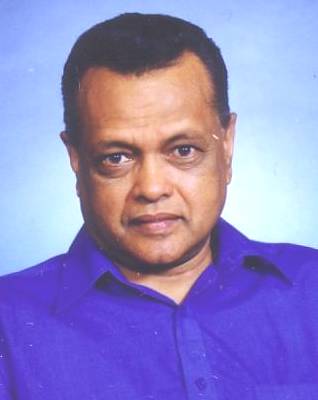 The Government of Commodore Josaia Voreqe (Frank) Bainimarama, rocked by the Constitution drafted by Yash Ghai, a Kenyan Constitutional Law expert has modified the document and the people of Fiji can express their views on or before April 5.
The Government of Commodore Josaia Voreqe (Frank) Bainimarama, rocked by the Constitution drafted by Yash Ghai, a Kenyan Constitutional Law expert has modified the document and the people of Fiji can express their views on or before April 5.
While the original draft was proposed to be presented to a Constituent Assembly, comprising a cross-section of interests, the Government decided to go directly to the people.
Either way, the outcome would not differ, as the Government views would prevail.
It has charted a course through the People’s Charter, which is the guiding light in the formulation of a new Constitution of Fiji.
Mr Bainimarama has confirmed that he would contest the election under the new Constitution in 2014.
Controversial draft
The Ghai Commission was dogged with controversy and it came to light that Professor Ghai’s version contravened the basic principles of the People’s Charter.
For example, it advocated the retention of the Great Council of Chiefs and create two chambers of Parliament with 71 elected members and other non-elected institutions.
The Government acted as swiftly as Professor Ghai’s departure from Fiji and destroyed copies that were meant for distribution.
Since then, the Government’s legal team worked through the Ghai draft and re-aligned it with the People’s Charter, ensuring that the fundamental principles of parliamentary representation were not compromised.
The final document
The final Constitution is expected to be ready by April 12.
Some of the basic provisions in the proposed Constitution are (a) Sovereign control to a single Parliament, represented by members elected by the people (b) Membership restricted to 45 for a four-year term (c) Assured civil, political and socio-economic rights with easy public access to facilities and services (d) Rights to housing and sanitation, reasonable access to transportation, adequate food and water and social security schemes (e) Specific rights to persons with disabilities and to children (f) A secular state which will allow all Fijians to practice their own faiths (g) proportional representation through a multi-member constituency which will give enhanced opportunities for women and youth to be in Parliament (i) More independence to the Judiciary, including control of its budget and finances (j) The Fiji Independent Commission Against Corruption and the Director of Public Prosecutions to control their own affairs (k) Human Rights and Anti-Discrimination Commission to be created to protect all citizens (l) An independent Electoral Commission with appropriate powers (j) the Right to change the constitution once implemented via a referendum.
Mr Bainimarama urged Fijians to participate fully in finalising the Constitution for Fiji. He claimed that the modification process had been forced upon the Government in the absence of registration by political parties in accordance with the law.
Fraud allegation
He also referred to allegations of fraud and impersonation (in the registration process by the political parties), which did not provide a conducive climate to proceed with the Constituent Assembly. He said that he was disappointed with some politicians who were still beholden to the politics of racism and corruption and it could not form the basis of a new beginning for Fiji.
He said that the draft Constitution was available through the Government website and hard copies from various Government outlets.
The public could give their feedback through email, as written submissions to the Solicitor-General’s office, text or post their comments on the Facebook page of the Information Ministry.
Assured stability
Mr Bainimarama assured the nation that positive aspects of the Ghai draft were incorporated to ensure that the Constitution stood the test of time, as Constitutional, political and economic stability were critical to create a prosperous Fiji, without systemic corruption and with a transparent governmental system that ensures realisation of the potential of all Fijians.
The new Constitution process differs from those made in 1970, 1990 and 1997.
The first was made by politicians with the guidance of the British, which was noted for its disproportionate representation given to the Europeans, a gross violation of democratic principles, which advocates ‘one vote, one value’.
The 1990 Constitution was the crop of Fijian nationalism, blatantly discriminatory, while the 1997 version was a collective endeavour, unanimously approved by the Parliament, Senate and the Great Council of Chiefs.
Constitution abrogated
The 1997 Constitution was expected to endure but was prematurely aborted, when the indigenous aristocracy failed to retain its political dominance, following the 1999 elections. It was enough for them to discredit the 1997 Constitution and label it as anti-indigenous interests and denounced democracy but they clung to it when, following the 2000 coup, they regained their power, position and perquisites. However, they were removed in a military coup of December 5, 2006, which ended their reign. For six years, the military-installed Government operated by decrees and is now in the process of formulating a Constitution that is more in harmony with the International norms and conventions. Importantly, racism is being eliminated and common roll is being introduced.
Will it work?
It should because, in the past, the Fijian Army was the backup support for the extremist elements who were emboldened to be boisterous, reckless and dangerous. In six years, it has implemented changes that no democratically elected Government would have had the courage to initiate.
Rajendra Prasad is a thinker, analyst and author (‘Tears in Paradise’) and our regular columnist. Email: raj.prasad@xtra.co.nz






